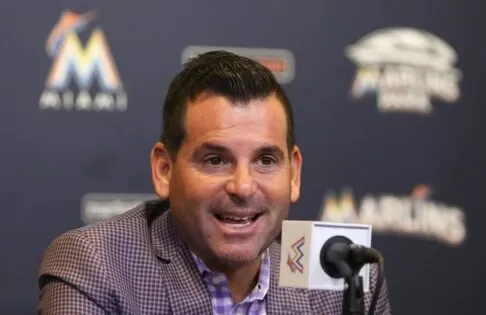In Major League Baseball, teams are constantly on the lookout for the next superstar. The one player who can lead their team to victory, bring in fans and ultimately, win them the coveted World Series title. But what happens when that superstar comes with a history of injuries? Massive contracts are signed, press conferences are held, and the hype is created. But then, the waiting game begins. Are teams making smart investments, or are they setting themselves up for disappointment? This is the core issue that has been plaguing the world of baseball for quite some time now.
Former Miami Marlins President, David Samson, recently spoke out about this ongoing issue. He criticized front offices for taking a gamble on risk-prone stars and the consequences it has on the team and the league as a whole. With the current injury crisis in MLB, it is time to address this problem and find a solution before it becomes too late.
It is no secret that injuries can greatly impact a team’s performance. Not only does it affect the player’s ability to play and contribute to the team, but it also affects the team’s overall chemistry and morale. Injuries can also result in the team having to make last-minute changes to their lineup, which can disrupt their rhythm and strategy. This is something that teams cannot afford, especially in a competitive league like Major League Baseball.
Big-name players often come with a hefty price tag, and teams are willing to pay it to secure their services. However, these contracts often come with a high risk due to the player’s injury history. Teams are aware of these risks but are willing to take a chance in hopes of having a star player on their roster. But as David Samson pointed out, this gamble may not always pay off and can have long-term consequences for the team’s success.
The issue of injuries has become a pressing concern in MLB, with a record-high number of players being placed on the injured list (IL) each season. In 2019, a total of 1,485 players were placed on the IL, a significant increase from the previous year. This trend has continued in the 2021 season, with top players like Jacob deGrom, Mike Trout, and Fernando Tatis Jr. all facing injuries that have affected their teams’ performance.
David Samson believes that teams need to be smarter in their decision-making process when it comes to signing injury-prone players. He stated, “It’s just not a good bet to take an injured player and give him a huge contract, hoping that he’s going to be healthy.” Instead, teams should focus on investing in players with a consistent track record of good health and performance. This approach may not bring in immediate results, but it will pay off in the long run.
The current injury crisis in MLB has also shed light on the need for better injury prevention strategies. Teams need to invest in state-of-the-art technology and hire specialized staff to monitor players’ health and prevent injuries. This will not only benefit the team but also the players in the long term. It is also essential for players to prioritize their health and well-being and listen to their bodies to avoid serious injuries.
Injuries in sports are inevitable, but the frequency and severity can be reduced with proper precautionary measures. It is time for teams to re-evaluate their strategies and focus on building a strong and healthy team, rather than chasing after an injury-prone superstar. As David Samson put it, “You get what you pay for.” Investing in a healthy team will bring in consistent results and secure long-term success for the franchise.
In conclusion, the issue of injuries in Major League Baseball is a cause for concern and needs to be addressed immediately. Teams need to be smarter in their decision-making process and invest in injury prevention strategies. While signing a star player may bring in initial excitement and revenue, it is the team’s health and stability that will ultimately bring in success. Let us learn from the current injury crisis and make wise decisions for the future of the game. As the saying goes, “health is wealth,” and in the world of sports, it is no different.

